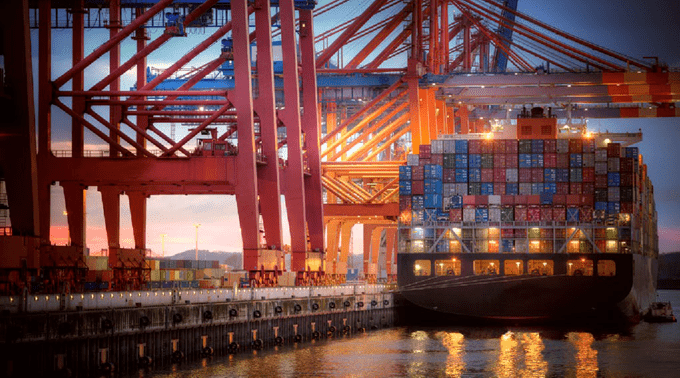The interplay of several forces since the turn of the 21st century demonstrates what can happen when risks become reality and resilience is put to the test for the trading system. It began with the global financial crisis (GFC, 2008/09), the trade war between the United States (US) and China (2018), the outbreak of COVID-19 (2020) and the conflict between Russia and Ukraine (2022).
Recent statistics however indicate that Malaysia’s trade is back on track, recording double-digit growth at 32.7% for the second quarter of 2022 (2022Q2) compared with 2021Q2. The negative growth rate of exports (imports) of goods and services of 1% (-2.4%) in 2019 that dipped drastically to negative 8.9% (-8.4%) in 2020 recorded an abrupt reversal to 15.9% (18.5%) in 2021.
That said, total trade as a share of gross domestic product (GDP) in the country has in fact been trending downwards reaching 130.7% in 2021, from 220.4% in 2000. Likewise, since 2000, trade balances for goods and services peaked at USD39.3 billion in 2006 and recorded declines thereafter. Prior to the outbreak of COVID-19, trade balances for the country stood at USD25.8 billion in 2019 and it declined further to USD21.2 billion in 2021.
The stellar performance of merchandise trade in 2022Q2, however, is not a good basis for making any strong conclusions pertaining to the country’s trade resilience or outlook. The reason being is that the outlook continues to be clouded with supply chain disruptions, rising trade protectionism, shortage of raw materials, rising oil prices and inflation, weak recovery in China and global demand.
The global multiple shocks reveal the true tests of economic (trade) resilience of the country, and therefore the trade outlook for Malaysia needs to be carefully appraised from a medium to longer term.
As the country transitions through this period of endemicity, there are two major trade lessons learnt as the pandemic-induced disruptions in demand and supply exposed the fragility of global value chains (GVCs) and risks in GVC interdependence.
First, compliance with sustainable standards along the supply chains and the digitization of trade are important elixirs for value-chain resilience, trade sustainability and post-pandemic (green) recovery.
Second, growth in digital trade requires supportive data governance, trade facilitation reforms and international policy coordination.
The key question, then, is: What are the trends that will shape the future of trade?
Sustainable Trade And Market Access
Compliance with sustainable standards or having an environmental, social and governance (ESG) strategy are going to be important for the future trade of companies. Based on the 2022 Sustainable Trade Index (STI), Malaysia performed the weakest in the societal pillar relative to the economic and environmental pillars. The low score for the societal pillar is not surprising.
A case in point is the labour standards in the rubber gloves industry, which became more visible during the pandemic. The record-breaking sales of disposable latex and synthetic gloves during the pandemic unearthed abusive labour practices in this industry and unhealthy communal living facilities for workers.
For its part, the government has amended its employment law to provide a legal definition for forced labour. That said, there are still some shortcomings as the law prohibiting forced labour is limited to formal employment relationships. The labour reforms are still very much an unfinished agenda.
Apart from labour standards, Malaysia would have to comply with the green recovery that is already gaining ground in European markets, the third largest trading partner of the former.
Namely, the stringent environmental, sustainability, and regulation standards within the European Union (EU) Green Deal framework will affect imports into the EU. The EU’s green deal states that its trading partners must have explicit net zero pathways to avoid impending border adjustment tariffs.
Since the EU is at the forefront of the global sustainability agenda, Malaysia should move ahead to elevate its broader trading relationship with the former. The connections with the EU are important for Malaysia in progressing along the green agenda.
Digital Trade And Data Governance
The pandemic has given rise to the next frontier of exchanges across borders, digital trade, which is supported by data flows and hinges on data-based technology (big data, artificial intelligence, Internet of Things (IoT), and cloud computing). What follows then is also the next frontier of GVCs that are digitally networked – evolving from a linear logic to a systemic or network logic that is data-driven with a platform enabled eco-system.
Digital trade, supported by cross-border data flows, requires clear articulation of the framework not just in terms of data flows, but also cybersecurity, digital taxes, data localization and non-discrimination policies.
Also, a prerequisite for cross-border data flows is putting in place adequate domestic regulatory frameworks for domestic data flows. Among the three enablers of data sharing, which are e-commerce and e-transactions, public intent data and private intent data, enabling re-use of public data is only moderately developed in Malaysia according to the World Bank’s Global Data Regulation Diagnostic Survey in 2021.
Specifically, Malaysia has yet to introduce regulatory frameworks on the mandatory use of common data classification and individuals’ right to access government data. In relation to the former, it is still not mandatory to use the common data classification categories across all government database applications or document management systems in Malaysia, while the latter refers to no establishment of an access to information (ATI) legislation to allow public data access.
According to the Asia-Pacific Digital Trade Regulatory Review 2022 and the 2019 Digital Trade Restrictiveness Index, Malaysia’s regulatory environment though friendly for businesses involved in cross-border digital trade, entails high compliance costs from regulations related to foreign investment restrictions, intellectual property rights (IPRs), telecommunication policy and competition, as well as internet intermediary liability and content access.
Addressing the above restrictions is important for centering digital trade as part of Malaysia’s overall trade outlook.
Trade Facilitation, Logistics And Connectivity
Digital trade entails the digitalization of trade facilitation mechanisms to improve trade connectivity. The observed restructuring of GVCs from the pre-to-post pandemic is demanding new technologies, for example, the IoT that can improve delivery services by tracking shipments in real time, blockchain shipping solutions that can reduce transit times and speed payments and automated document processing that can speed goods through customs.
Trade facilitation for logistics and connectivity have therefore become major determinants of value chain activity and location choices today.
The implementation of Malaysia’s commitments under the ratified World Trade Organization (WTO) Trade Facilitation Agreement (TFA) on 26 May 2015 is indeed commendable. The current rate of implementation commitments of Malaysia under the agreement stands at 100% (like that of Singapore Indonesia and Brunei) and is above the ASEAN average.
To drive seamless cross-border trade through digitalization, the country has implemented several initiatives. Namely, Malaysia has built cross-border logistics facilities (Digital Free Trade Zone (DFTZ), 2017) to boost its 2016 eCommerce roadmap. This initiative, a collaboration between the Malaysian Digital Economy Corporation (MDEC) and the Royal Malaysian Customs Department (RMCD), caters for the high volumes of small parcels and buyers’ expectations for quick fulfilment in cross-border e-commerce.
Likewise, the National Logistics and Trade Facilitation Masterplan (2015–2020), under the supervision of the Ministry of Transport (MOT), was developed to provide strategic directions to further improve the productivity and competitiveness of the logistics industry as well as trade facilitation.
However, there is still room for progress as the domestic logistics industry has been cited as facing constraints, such as inadequate infrastructure and limited internet connectivity, the low adoption of digitalization, and burdensome regulations.
At the border, Malaysia needs to review transport, logistics and border process regulations to enable flexible responses to disruptions. Malaysia also needs to promote the diffusion of digital technologies to improve information systems, risk management and trade facilitation.
Trade Agreements And Regulatory Cooperation
Malaysia and other countries in the region can no longer work in silos. At the regional level, there should be efforts to reduce unnecessary heterogeneity of standards, regulatory divergences in data sharing and associated regulations to facilitate trade.
Policy coordination, for example, is needed in the regional context (through regional trade agreements or RTAs) to discipline trade restrictions that obstruct supply chains. An important lesson from the pandemic is that there is a need to identify an extended list of essential goods.
This is particularly important given the strong interdependencies in the trade of essential goods. Worth noting here, however, is that seamless trade in essential goods is not confined just to non-tariff measures (NTMs) but includes trade facilitation and logistic support to address supply chain issues.
Apart from cooperation within the Association of Southeast Asian Nations (ASEAN), cooperation through trade agreements that go beyond the narrow traditional areas of commitments to include advanced or new issues – rising barriers to digital trade in the form of data localization requirements through to local registration mandates, and the interoperability between digital frameworks – is important for a country like Malaysia to realize its digital trade potentials.
Multilateral deals, such as the Comprehensive and Progressive Agreement for Trans-Pacific Partnership (CPTPP), are relevant as they include robust provisions to enhance digital trade.
Namely, the CPTPP addresses cross-border transfer of information by electronic means (Article 14.11) and online consumer protection (Article 14.7); and prohibits the non-discriminatory treatment of digital products (Article 14.4), disclosure of source codes (Article 14.17) and data localization requirements (Article 14.13).
Malaysia’s ratification of the CPTPP in September 2022 is a step in the right direction to collaborating on digital trade. Venturing into other new trade agreements with selected strategic partners may also expand the opportunities for GVC diversification and mitigate risks of GVC concentration.
To conclude, resilient GVCs underpin the future of trade and a crucial aspect for building resilience is the firm. Firms need to have the capacity and willingness to adopt ESG practices and digital technologies. Therefore, firm-level ESG compliance and firm-level digitalization are pivotal for sustainable trade and digital trade respectively.
Companies are now more conscious than before that ESG compliance and digitalization are key resolutions for them to be more resilient, lest they run into risks of shrinking investments (capital) and diminishing market demand. Recognizably, these shifts entail long-term (and plausibly costly) adjustments at the firm-level. Indeed, it is going to be a long process!
Evelyn S. Devadason is a Professor at the Faculty of Business and Economics, Universiti Malaya, and Vice-President of the Malaysian Economic Association.










